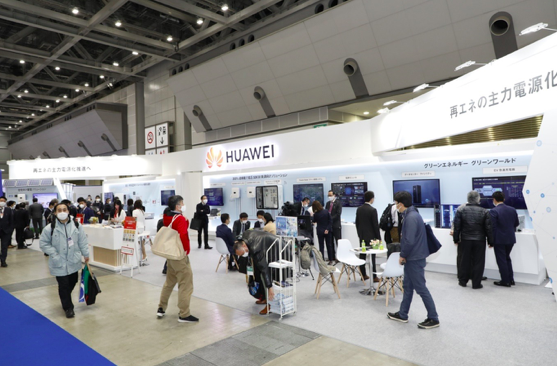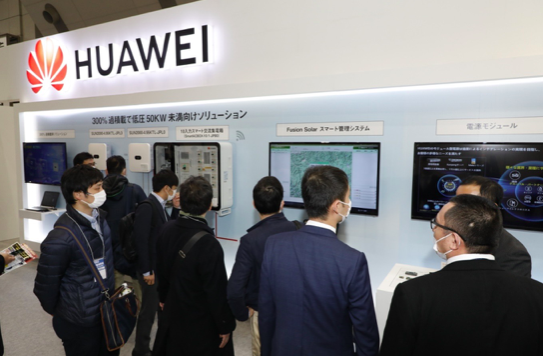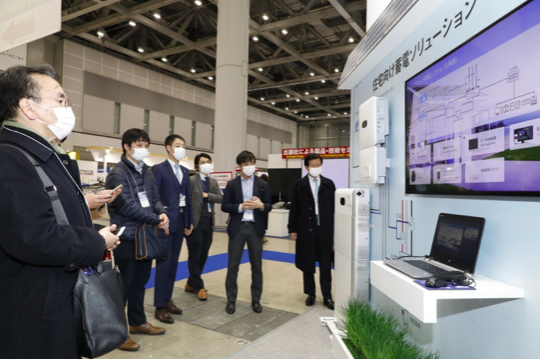Huawei is exhibiting at this year’s PV EXPO with, for the first time, a complete array of solutions from its digital power business, encompassing the five key areas of Smart PV, Data Centre Energy, iSitePower, Modular Power and mPower.

A smart and fully connected world in every sense of the concept is now within reach. There is a growing demand for green energy sources, especially photovoltaic, to solve the challenges of digital transformation while also taking into account the impact on the environment and climate change. The process of this transformation must deal with challenges from the management of big data, massive traffic volumes and high levels of energy consumption. Huawei’s Digital Power product line seizes the opportunity to evolve from traditional power supply solutions to the energy Internet, focusing on information and communications technologies (ICT), while providing energy infrastructure product solutions and services including solutions for communications, Data Centre, Smart PV, mPower and Modular Power. Since becoming a separate business unit within Huawei in 2008, the digital power division has expanded rapidly, at an average annual growth rate of 29%, with industry-leading output and market share in prefabricated modular Data Centres, modular UPS and Smart PV. Huawei made a big impact on the Japanese market last year when it rolled out its full line-up of digital power solutions, giving Japanese customers and partners an opportunity to gain a deeper understanding of the company’s leadership position within the sector.
“We are delighted to bring Huawei’s full array of digital power solutions to PV Expo Tokyo,” said Zhang Weiwei, General Manager of Huawei Japan’sDigital Power Business Unit. Japan has always been a market to which we attach great importance. The photovoltaic market has grown significantly in Japan over the years, and Huawei is looking forward to continuing to contribute to its success. At this exhibition, in addition to our traditional ground-based large-scale power plants and industrial and commercial scenarios, we are also showcasing the latest full product portfolio in the residential scenario. This is Huawei’s first foray into Japan’s residential energy storage market. The products have already obtained JET certification and sales have formally started.”

Renewable energy further strengthens its position in the market
Renewable energy will become the focal point of future installations, and PV will become the leading form of power supply. With the feed-in tariff for photovoltaic power generation continuing to drop, helping customers cut costs and enhance revenue has become Huawei’s mission, from power plant construction to O&M (operation and maintenance). Huawei has optimized the entire process end-to-end, from cross-border integration of digital information, internet and photovoltaic technologies to simplified, fully digital, globalized automated operation and maintenance and other innovative services. In so doing, the company has achieved efficient power generation alongside intelligent O&M (operation and maintenance), resulting in safe and reliable smart photovoltaic power plant solutions, ultimately delivering maximum value to customers who are owners and managers of power distribution facilities.
Distributed residential and C&I (commercial and industrial) power plants are performing well, with system safety being the first and foremost concern. Huawei brings customers the ultimate security experience through innovation and integration of AI and other technologies.
- Active Safety: Speedy arc fault protection by inverter shutdown in 0.5s
- Reliable equipment: no fuses and other parts that can break down due to wear and tear, reducing the failure rate to less than 0.5%; the only manufacturer whose equipment has been tested for response to rocket-triggered lightning.
- Reliable grid connection: leading AI algorithm, strong adaptability to weak grid, lasting power generation without downtime.
Meanwhile, the 20kw inverter for the home consumer market has officially started shipping. The AC output of the three-phase 200V model can directly match the original 200V system without requiring replacement of the transformer.
Residential energy storage has become a highlight
Huawei’s newly-launched residential smart string ESS (Energy Storage System) meets Japan’s disaster preparedness requirements in the context of carbon neutrality. Since its launch last year, the product has been favourably reviewed in many European countries. Residential energy storage products can be used not only in homes, but also in public facilities including schools, municipal buildings, preparedness centres and small stores, by connecting multiple units in parallel to provide a disaster preparedness solution. Huawei’s residential energy storage batteries are modular in design and fully suited for use in parallel, with a battery management system (BMS) integrated into every battery pack.

- Facilitated capacity expansion: the battery pack does not require a pre-charge before being added to the existing battery system. Just plug in and use immediately upon unpacking.
- A known characteristic of battery packs is that the components decay at different rates while in use (such as the internal resistance of the battery). However, the built-in BMS normalizes the output voltage of each battery pack, avoiding the barrel effect caused by variances in charging and discharging speeds, while boosting the speed at which the entire battery system charges and discharges. The feature serves to maximize the available power during the life of the battery, effectively increasing available power by about 25%.
- The parallel module design architecture allows for automatic isolation of a failed segment and continuation of normal operation for the remaining packs, ensuring the normal operation of the entire battery system and averting system downtime.
Japan announced a draft decarbonization roadmap at the end of 2020, confirming “net zero emissions by 2050” and aiming to accelerate the transition to a low-carbon society through technological innovation and green investment. The digitalization of energy is well underway, while the innovative integration of digital and energy technologies will enable the end-to-end visible, manageable and controllable intelligent management of energy infrastructure, in concert with enhanced energy efficiency. Environmentally responsible “green” sources of energy will benefit not only thousands of industries but also innumerable households, with PV, representative of green energy, becoming the main source as the era of comprehensive PV price parity unfolds. Huawei’s exchanges with Japanese customers at PV EXPO have further confirmed that PV power generation and energy storage integration will inevitably become a strong growth point for renewable energy in the coming years.
